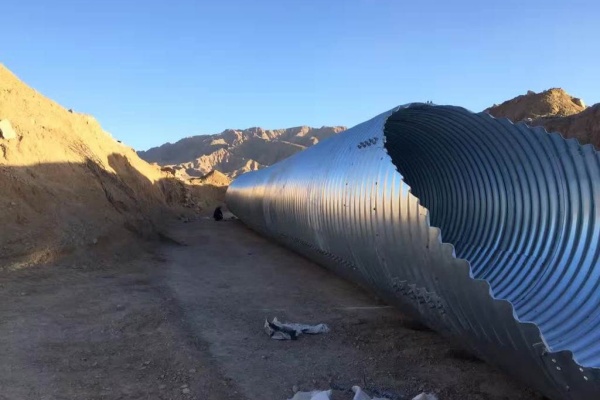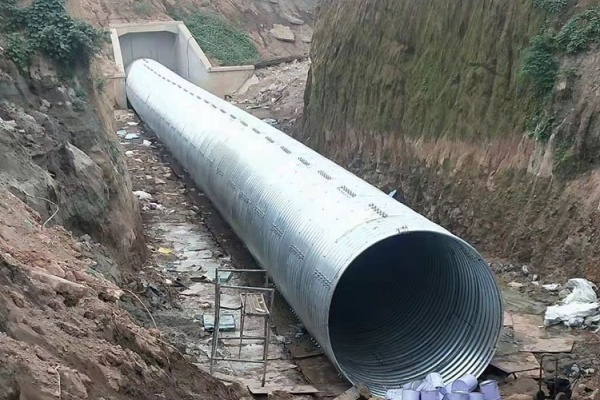Corrugated Steel Culverts in Turkey: Engineering Resilient Infrastructure for Demanding Terrains
Turkey’s geographically complex landscape—bridging Europe and Asia with seismic zones, mountainous regions, and coastal environments—demands infrastructure solutions that combine strength, adaptability, and speed. Corrugated steel culverts (also widely known as corrugated metal culverts) have emerged as the engineering backbone for Turkish road, rail, and hydraulic projects, outperforming traditional concrete alternatives. These structures leverage a unique corrugated profile to deliver exceptional load distribution, seismic resilience, and rapid installation, making them ideal for Turkey’s soft soils, high-risk earthquake zones, and ambitious national development timelines. Unlike rigid concrete, the flexibility of corrugated pipe culverts accommodates ground settlement and dynamic stresses, while their factory precision manufacturing cuts construction timelines by up to 70%. For engineers and project planners across Turkey, this translates to lower lifecycle costs, reduced site disruption, and long-term reliability—critical factors in large-scale infrastructure initiatives like the "2023 Vision" and "Century Projects."
The versatility of corrugated steel culverts shines in diverse Turkish environments. On national highways like the D750 Antalya corridor, large-diameter culverts stabilize high-fill sections over soft soils, preventing costly road deformations. In the rain-swept Black Sea region near Trabzon, polymer-coated corrugated metal culverts manage aggressive runoff while resisting humidity-driven corrosion—a critical advantage over concrete. For high-speed rail networks (e.g., Ankara-Sivas line), these culverts ensure track integrity under heavy dynamic loads, with installations completed during brief rail "possession windows" to minimize service interruptions. Turkey’s Southeastern Anatolia Project (GAP), one of the world’s largest irrigation schemes, relies on corrugated steel culverts to channel water across roads and valleys, maximizing flow efficiency with smooth hydraulic profiles. Even industrial zones (İzmit) and mining hubs (Zonguldak) deploy reinforced variants to support extreme heavy-haul traffic. Each project underscores the corrosion resistance, structural durability, and design flexibility of modern corrugated metal culvert systems in meeting Turkey’s unique infrastructural demands.
Turkey’s corrugated steel culvert market is expanding rapidly, fueled by government megaprojects and growing technical acceptance. Key growth catalysts include:
State Infrastructure Investment: "Istanbul Canal," trans-Marmara tunnels, and rail/road upgrades requiring cost-effective, quick-deploy solutions.
Local Manufacturing Rise: Turkish plants now produce EN/ISO-compliant culverts, reducing import dependency and lead times for small-to-medium diameters.
Disaster Resilience Needs: Earthquake/Flood-prone regions prioritize flexible, fail-safe drainage infrastructure.
Despite momentum, challenges persist: Standardization Gaps: Lack of unified Turkish design codes causes conservative over-engineering, limiting optimization.
Corrosion Demands: Black Sea humidity, eastern freeze-thaw cycles, and saline soils necessitate advanced coatings (e.g., Galfan, Zn-Al-Mg alloys)—still underutilized locally.
Skills Shortage: Regional disparities in specialized design/installation expertise impact project quality outside major cities like Ankara or Istanbul.
The trajectory for corrugated metal culverts in Turkey points toward technology-led growth:
The trajectory for corrugated metal culverts in Turkey points toward technology-led growth:
Advanced Materials: Nano-coated steels and polymer hybrids will extend service life beyond 100 years in corrosive zones.
Smart Infrastructure: Embedded sensors for real-time deformation/corrosion monitoring align with Turkey’s digital infrastructure goals.
Eco-Compliance: Recyclable steel and low-carbon installation boost appeal amid tightening sustainability regulations.
Design Expansion: Arch, box, and long-span profiles (8m+) will unlock applications in mega-tunnels and floodways.
Government policies prioritizing rapid, disaster-resilient construction—coupled with maturing local expertise—will accelerate adoption. Suppliers offering Turkey-optimized corrugated steel culverts with seismic certification, climate-specific coatings, and localized technical support will lead this $250M+ market.
(2) Layered Concrete Pouring: Pour the base layer first, allow initial curing, then add the second layer. Use excavators to suppress floating during pouring.
 Products
Products Application
Application



